Cinnamon, known to man since time immemorial, is an amazing spice gained from the dried inner bark of an evergreen bushy tree belonging to the Laurel family (Lauraceae). The tree does not grow higher than 30 feet and is native to countries of South-Asia and South-East Asia, especially to Sri Lanka, the Indian Malabar coast, Bangladesh, Myanmar(Burma) and Indonesia. Nowadays it is also cultivated in countries of Central- and South-America, the West-Indies, Madagascar and other regions of the world which due to their subtropical or tropical climate enable the growth of the tree. Cinnamon prefers a soil of loam or sandy loam and grows well under wet to semi-dry conditions. By peeling off the bark from the branches and by drying and rolling the “quills” of the bark or by grinding them to powder the Cinnamon unfolds its marvelous fragrance. Both, bark and leaves of the tree are highly aromatic and can yield two different kinds of essential oils. “Sweet Cinnamon” bark oil with its more delicate flavour, more refined quality and lighter colour differs from the highly phenolic leaf oil and from “Cassia” bark oil, the Chinese equivalent. Cassia, being less expensive is often used to mix with the Cinnamon of Sri Lanka. The same can happen with the essential oil. The obviously warm and delicious flavour of Cinnamon enriches sweet treats, cakes, dessert dishes, teas, coffee, chocolate and other specials of the kitchen.

The name “Cinnamon” stems from the Hebrew or Arabic word “amomon”, meaning a fragrant spice plant, and alluding to the highly esteemed fragrance of the plant used for consecrated incense and as an oil for sacred rituals. The Old Testament mentions it as a compound for anointing oils, and the ancient Egyptians were using it as spice, perfume, and also for embalming the dead.
From the beginning of its use Cinnamon was ever shrouded in veils of mystery as to the question of its real origin and modes of harvesting. The spice in former times was worth fifteen times the price of silver. Known in the middle-ages as the “Cinnamon-route,” the commercial trade was maintained by local traders shipping the spice from Asian countries to Africa and via overland trade to coastal ports like Alexandria in Egypt. Venetian traders then monopolizing the commerce distributed the rare product in form of sticks, powder, or highly paid distilled oil to different markets of the Mediterranean world and from there to Central and Northern Europe. Today Sri Lanka produces more than 90% of the sweet Cinnamon.
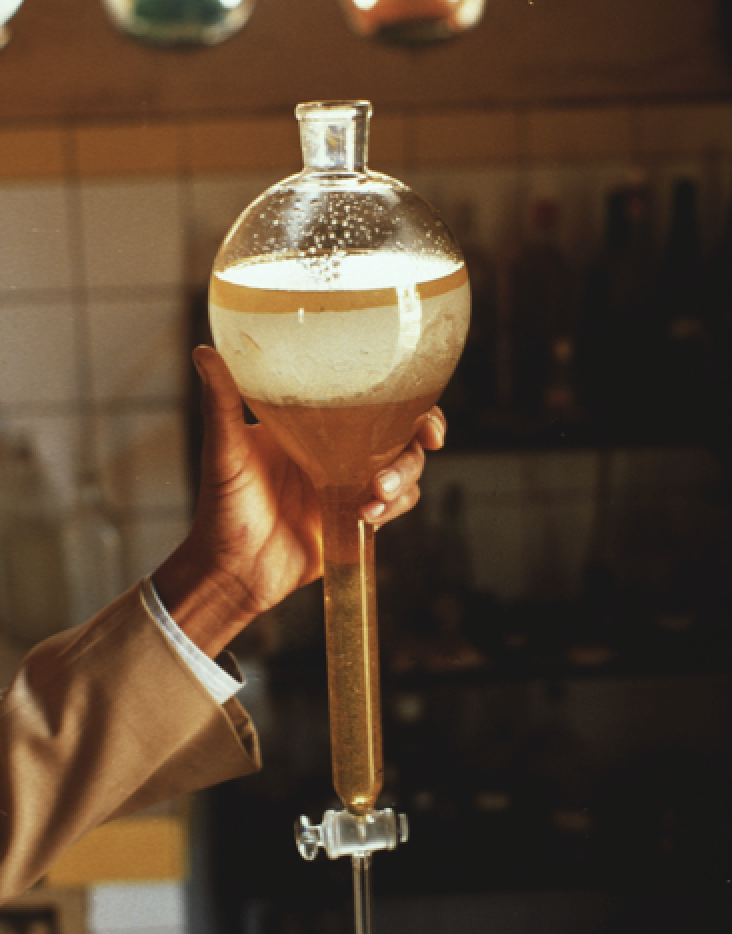
The density of Cinnamon essential oils is generally lower than water – but with exceptions. Usually 1.000 is the density ascribed to water, and the density of essential oils lies between 0.759 and 1.096. Oils from Cinnamon bark, and more even from Clove bud are over 1.000 which means that they are heavier than water. Now, when I once visited a distillery of Cinnamon in Madagascar the distiller showed me this here above after distillation. It shows that Cinnamon has 2 different densities, one is lighter and the other is heavier than water. Both are mixed after distillation. In the middle here in the photo between the 2 densities is the hydrolate. This makes the separation after distillation definitely a bit complicated… One has to use 2 different kind of vessels to separate the 2 densities from the hydrolate.
Major bio-chemical compounds are
• Aldehydes: (E)-cinnamaldehyde (59.76%)
• Terpene esters: cinnamyl acetate (10.92%), benzyl benzoate (1.18%)
• Monoterpene alcohols: linalool (2.60%), alpha-terpineol (0.94%), terpinen-4-ol (0.75%)
• Phenols: eugenol (4.42%)
• Monoterpenes: beta-phellandrene (4.16%), para-cymene (2.07%), alpha-pinene (1.01%), alpha-phellandrene (1.42%), alpha-terpinene (1.16%), camphene (0.42%), beta-pinene (0.28%)
• Sesquiterpenes: beta-caryophyllene (1.97%), alpha-humulene (0.39%)
Density: the lighter part around 0.990 – the heavier part around 1.010
Cinammon as medicine
Due to its special properties Cinnamon covers a vast range of possible medicinal applications. The plant therefore enjoys a long history not only of culinary and religious but also of therapeutical use. The spicy warmth of Cassia Cinnamon for example is used in Chinese medicine for the treatment of circulatory deficiencies. It is said to invigorate and warm up the bloodstream thanks to its spasmolytic properties. Indian Ayurveda medicine prescribes Cinnamon in case of problems accompanying painful and difficult menstruation. It is used for the monthly periods as a uterine stimulant and as a painkiller. Recent studies have shown that Cinnamon can reduce blood sugar and cholesterol. It is predominantly used as a carminative; and it helps against indigestion, flatulence, loss of appetite and rapidly gives relief to vomiting, nausea, diarrhea etc.
The bio-chemistry of Cinnamon shows the presence of a high percentage of cinnamaldehyde which is a major reason for its tranquilizing and sedative effects. This special aldehyde is co-responsible for Cinnamon oil’s capacity to reduce high fever in case of infections, as well as for its success with digestive problems. Bronchial asthma is also one of the other numerous possibilities for the medicinal use of Cinnamon, a treatment derived from an ancient folk tradition of healing. The bactericidal, antiviral and antifungal properties of Cinnamon nowadays are validated by long-time research programs. The conclusion here is that Cinnamon can inhibit the growth of Salmonella, Asian flu virus A, Escherichia coli and other microbes. No wonder that Cinnamon therefore, similar to Clove, was and is extensively used as a spice to protect against food borne bacteria. Other important bio-chemical compounds in Cinnamon, apart from the cinnam-aldehyde, are eugenol and also pinenes – they add to the different effects of Cinnamon on the medicinal level.
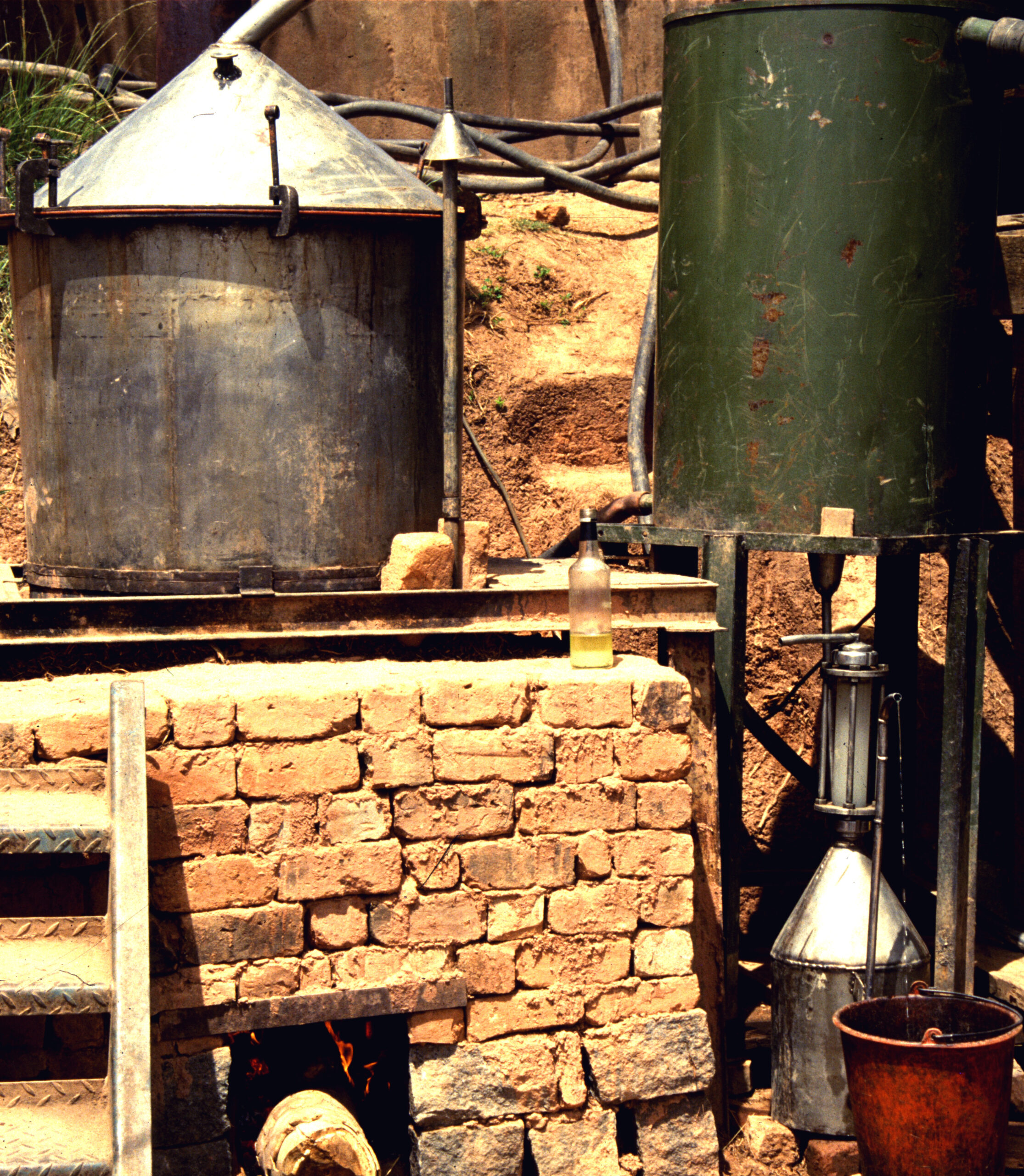
And even more timely for our present health crisis: The French scientist Griffon decades ago already studied the anti-microbial effects of essential oils. He analysed particularly the vitality of pathogenic germs contained in the air. His blend of essential oils of Cinnamon, Fir, Peppermint, Lavender, Rosemary, and Clove bud was evaporated at 15 cm over the floor where the pollution with germs is much higher than at “nose-level”. The analyses showed after 24 hours the presence of 210 stems of bacteria or fungi containing among many others large amounts of mould and of Staphylococci. Within 1/2 an hour of evaporation of the essential oil blend out of the 210 stems only 4 had survived.
And more to the therapeutic effects…
Cinnamon bark and leaf oils with their “phenolic” nature are universal energizers, esp. for the digestive system, a neuro-muscular relaxer and a protective shield against cold, fever and flu. Their strong anti-infectious and anti-microbial properties are linked to immune stimulating effects and make the oil with its spicy, appealing fragrance a must for the Aromatherapist. During long distance travels and their frequent accompanying complications for the digestive system the anti-diarrohea properties of Cinnamon and its protection against intestinal infections are of great help. The oil is strongly indicated also in cases of cystitis and bronchitis, and it stimulates contractions during childbirth.
The revitalizing, invigorating force of Cinnamon oil is connected to its warming, tropical character. No wonder that Cinnamon is particularly indicated for individuals with fragile constitution needing a constant “plus” of energy. It strengthens the heart and warms the kidneys, our energy batteries. And this means: it is an excellent neurotonic and can give a saving “kick” in stress related conditions. It is a weapon against winter weariness and weakened inner defence – Clearing fire for energy and joy.
Ayurvedic medicine
Cinnamon – of course – is considered to increase the Pitta dosha, the element of fire, in the physiology. This also means that it is a good remedy against excess Kapha dosha, the heavy element which can easily lead to lethargy, depression, lack of motivation etc. Cinnamon is also considered to be good for balancing Vata dosha, the cool and airy element in our physiology. Taken in reasonable amounts Cinnamon can also be used by Pitta types. Cinnamon oil is also used in Ayurveda against headaches and joint pains.
(cf. http://www.mapi.com/ayurvedic-recipes/spices/Cinnamon.html)
Chinese Medicine (TCM)
Here, Cinnamon is connected to the heart, kidney, liver, and spleen meridians. With its sweet-hot character it is helpful for chronic cold conditions – a factor which hints at a deficiency of the element of Yang.
“Clinically, this can present an aversion to cold, chronic weak back, impotence, and urinary frequency with diluted or clear urine. It can look like chronic digestive insufficiency, with non-painful and non-burning diarrhea, indigested food in the stool, and reduced appetite. Cold in the body can also present a chronic wheezing, low pulse rate, and chronic chest tightness.”
(https://www.philadelphia-acupuncture.com/Cinnamon-chinese-herbal-medicine/)
In TCM Cinnamon is also considered a remedy for joint pain. Also painful menstruation, dysmenorrhea, irregular periods, hyperglycaemia, reduction of high blood pressure and diabetes, and common yeast infections are mentioned in the context of using Cinnamon/Cassia. Again: The most important use for Cinnamon in TCM lies in the unblocking of the Yang energy. This means to help for
“treatment of kidney yang deficiency leading to lower back pain and knee weakness, bladder infections, shortness of breath, asthma, oedema, dizziness, ringing in the ears, abdominal pain, skin infections, arthritic pain, and reduced appetite. Cinnamon also has the ability to penetrate the heart, lung, and bladder meridians.”
(http://www.treeofqi.com/2017/12/herbal-spotlight-Cinnamon/)
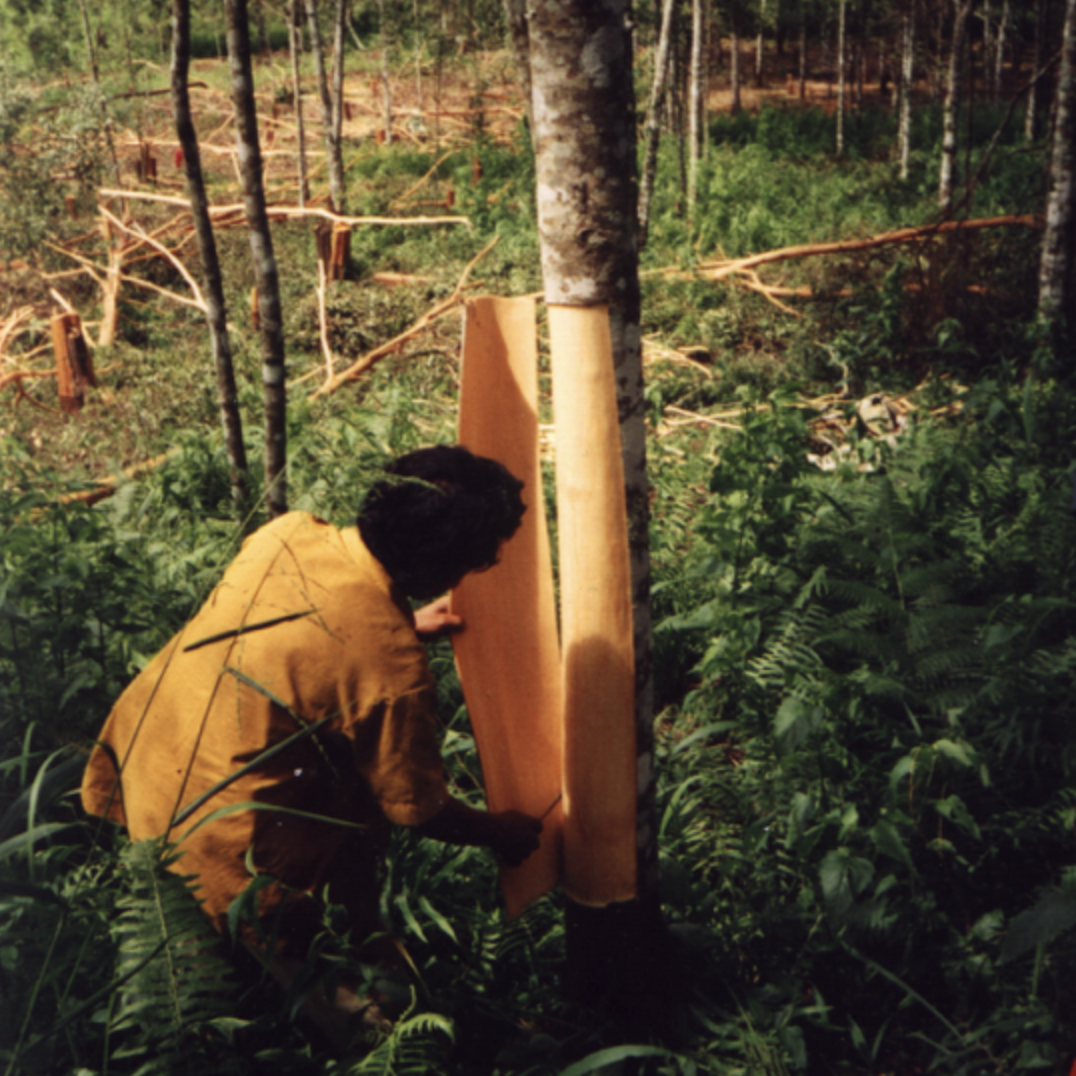
Recipes and research
Pneumonia
• 1 or more anti-infectious oils like Thyme, Cinnamon, Cassia
• a citrus oil like Mandarin, Orange as anxiolytic and for the rescue of joy
• a decongestant and mucolytic oil like Niaouli, Hyssop, Cajeput
Warm steam vaporizer once a day at night + the same mixture(3%) diluted in vegetable oil to apply as massage on the chest and back.
The use of aromatic necklace is also indicated.
(Carla Vescovi/Aromaluz School, Campinas, Brazil)
Bad Breath and Tooth ache
• 1 drop of Cinnamon oil
• 2 drops of Clovebud hydrolate
blend in a cup of warm water, rinse in the mouth for 1 minute, spit it out
Changing the atmosphere
“Use pure Cinnamon oil diffused in small amounts in your home, office, or car to aide in the prevention of infection and uplift the mood. Diffuse revitalizing Cinnamon essential oil in small amounts in the bedroom or living room to wash away stress and anxiety, setting the mood for relaxation and romance with your partner”
(David Crow, Floracopeia)
Honey and Cinnamon – an ancient panacea
“Honey and Cinnamon are the most common ingredients found in every Indian household. Both of them have multiple proven health benefits. But as per ancient Ayurvedic practice, the combination of the two can be even more beneficial. Right from treating an upset stomach, cold, cough, improving the body’s immunity and treating bladder infections, the mixture of honey and Cinnamon can treat almost any problem and has no side effect.”
(https://timesofindia.indiatimes.com/life-style/health-fitness/home- remedies/here-is-why-honey-and-Cinnamon-is-a-powerful- combination/photostory/69115399.cms?picid=69115559)
Anti-depressive
• 1 drop of Bergamot
• 1 drop of Lemon
• 1 drop of Ravintsara
• 1 drop of Cinnamon
• 1 drop of Neroli
blend with 2 Tablespoons of Honey
Cancer
Cinnamon is a natural component showing a wide range of pharmacological functions including anti-oxidant, anti-microbial and anti-cancer activities. Impaired apoptosis plays critical roles in the initiation and progression of cancer. Increasing evidence indicates that Cinnamon, as a therapeutic agent, has anti-cancer effects via affecting numerous apoptosis-related pathways in cancer cells. Here, we highlighted anticancer properties of Cinnamon, particularly through targeting apoptosis-related mechanisms.
(https://www.sciencedirect.com/science/article/abs/pii/S0223523419304854 ?via%3Dihub)
Cardamom oil has been shown to reduce breast cancer tumor size by 33% and tumor cell proliferation by 38%. When combined with other herbs such as Cinnamon and Ginger, Cardamom makes a delicious spice that also serves to fight breast cancer…. Cardamom phytochemicals are well-known inhibitors of cancer. (https://www.google.de/search?source=hp&ei=MfxjXpmCCsXQaPSirKAD&q=Cardamom+breast+cancer&oq=Cardamom+breast+cancer&gs_l=psy-ab.)
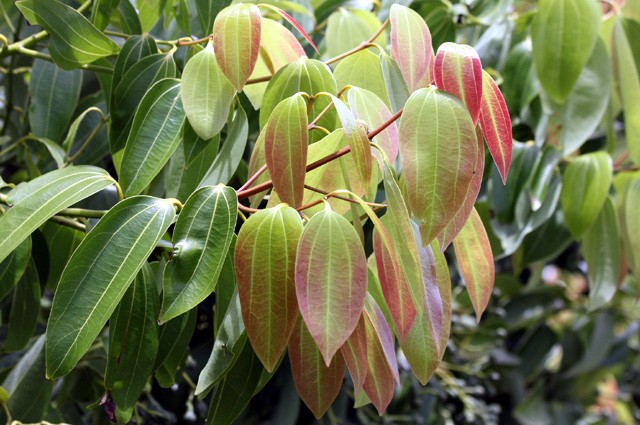
Diabetes
According to another study, Cinnamon plays a major role in regulating blood sugar and cholesterol levels. In fact, Cinnamon has been shown to lower blood sugar and cholesterol levels in humans through the consumption of Cinnamon in any dosage.
“Cinnamon improves blood sugar control in people with prediabetes and could slow the progression to type 2 diabetes, according to a new study published in the Journal of the Endocrine Society.”
(https://www.sciencedaily.com/releases/2020/07/200721102143.htm)
Painkiller
A 2012 study measured the effects of aromatherapy as a painkiller during the menstrual cycle of high school girls. There was an aromatherapy massage group and an acetaminophen (pain killer and fever reduced) group. The aromatherapy massage was performed on subjects in the treatment group; the abdomen was massaged once using Clary sage, Marjoram, Cinnamon, Ginger and Geranium oils in a base of Almond oil. The level of menstrual pain was assessed 24 hours later; the results found that the reduction of menstrual pain was significantly higher in the aromatherapy group than in the acetaminophen group.
(https://draxe.com/clary-sage/)
Severe bacterial or viral infection (D. Baudoux)
• Cinnamon bark: 1 drop
• Mountain Savory: 2 drops
• Thyme thujanol: 2 drops
3 drops of the mixture on 1/4 lump of cane sugar or in a teaspoon of olive oil 3 times a day before meals for 7 to 10 days
Cystitis (Dr Telphon)
Local treatment
• Birch: 2 ml
• Cinnamon bark: 2 ml
• Copaiba: 2 ml
in Evening primrose: 20 ml
Macadamia oil: 20 ml
Gently massage the lower abdomen with the mixture. Repeat the operation 1 to 2 times a day if necessary. Local applications per day until healed, in addition to a curative treatment.
Oral treatment:
Take 1 drop of each essential oil morning and evening, in a teaspoon of olive oil or honey or in a little bread crumb.
Cellulite / hydrolipidic retentions (Baudoux)
• Eucalyptus menthol: 2 ml
• Niaouli: 2 ml
• Cinnamon bark: 1 ml
• Lemon: 2 ml
• Lemongrass: 2 ml
in Hazelnut oil 4 ml
8 to 12 drops of the mixture applied locally by penetrating massage
2 to 3 times a day
An American study presented during the scientific sessions of the “American Heart Association” attributes to Cinnamon an anti-fat storage action, which means: Cinnamon has a slimming property – useful to remember in the kitchen under the condition to not abuse with the quantity…
read also: (https://pubmed.ncbi.nlm.nih.gov/31800140/)
Summary of Major Properties
• antiseptic and anti-bacterial
• antifungal
• anti-viral
• antiparasitic
• anti-fermentation
• very broad-spectrum and powerful anti-bacterial
• tonic and general stimulant
• aphrodisiac
• anti-diabetic
• emmenagogue
• hyperemic (induces blood flow)
• anti-skin aging
Summary of other major indications
• intestinal infections (diarrhoea, dysentery, etc.)
• urinary and gynaecological infections: cystitis, urethritis, vaginitis
• tropical diseases (amoebiasis, typhoid fever), verminosis, infectious enterocolitis
• functional male impotence
• somnolence, asthenia, depression
• oral and skin infections: mycoses, ringworm, scabies, etc.
• tropical fevers
• amenorrhea
• warts
cf. (https://www.aroma-zone.com/info/fiche-technique/huile-essentielle- cannelle-de-ceylan-ecorce-bio-aroma-zone?page=library)
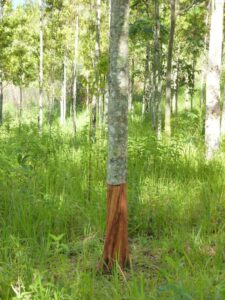
Cinnamon increases learning ability
A study performed by the University of Rush Medical Center, Chicago, USA showed improved learning ability via the use of Cinnamon. The research study
“underlines the importance of Cinnamon, a commonly used natural spice and flavoring material, and its metabolite sodium benzoate (NaB) in converting poor learning mice to good learning ones… oral treatment of Cinnamon and NaB increased spatial memory consolidation-induced activation of CREB and expression of plasticity-related molecules in the hippocampus of poor-learning mice… These results describe a novel property of Cinnamon in switching poor learners to good learners via stimulating hippocampal plasticity.
Cinnamon Converts Poor Learning Mice to Good Learners: Implications for Memory Improvement – (https://link.springer.com/article/10.1007/s11481-016-9693- 6?utm_medium=affiliate&utm_source=commission_junction&utm_campaign=3_nsn6445_brand_PID100003894&utm_content=de_textlink)
These observations confirm previous studies. Already in 2013, a research study published in the “Journal of Alzheimer’s Disease” suggested that Cinnamon could slow the onset of Alzheimer’s disease.
cf. “Cinnamon may be fragrant medicine for the brain” https://www.eurekalert.org/news-releases/474407
A Testimonial
Clinical case
Young man, age 28 years. Spinal cord injury bicycle accident. Tetraparesia
“….That same day they sprayed a few drops of Bergamot essential oil on the linen under the pillow. She did this for two weeks. Changes were notorious in the mood of the young boy. From there on she introduced scents that the boy liked… She used Vanilla and Cinnamon oil through a spray which was prepared for use in his room. The boy progressed to a functional level so well and quickly. He requested information about how the essential oils act on the olfactory level, and I made a graphic for him.”
Eva Bouzas, OSHADHI/ Spain
A few words on the bark
Cinnamon oil, as we know, is distilled from the bark of the Cinnamon tree. This is already quite special. Very few essential oils are derived from this “skin” or “shell” of a tree. How does Nature make it possible that this hard outer protective layer of a plant can be imbibed with essential oils? It is the same question which we can ask for the oils stemming from resins or even the hardwood of trees. If we can say that the bark is a kind of protective wall against the outside world, it is at the same time that organ which is most exposed to changing weather conditions, it is “in between” the inner and the outer, it is a “growth zone” and at the same time an information board telling the plant a lot of things happening all around. With its lighter so called “bast cells” the bark is filled with the element of air which makes it more flexible than the harder inner cells of the trunk. And with these lighter cells the tree buffers off too much heat or cold. And like an armour it is more capable to transport carbohydrates up and down to where they are needed between the leaves and the root. That means also: it constantly transfers growth and survival information’s inside the tree. And more than this: it also protects the tree against all kinds of “foreign invaders” like insects or other animals. An essential oil from such a plant organ like the bark can only be very special in its nature having absorbed vital dynamics of life and of evolution over millions of years.
Already the question: what is a tree? is very special. And what is its trunk? Trees are those beings which have the highest thrust in the kingdom of plants to grow upwards, which means grow against the gravitational force. That requires a lot of inner “will power”, a lot of desire to rise from the ground towards the sky, towards the light. And the bark has that too.
So, again: what can an essential oil from the bark of a tree like the Cinnamon tree contain in form of “signature information”? There is definitely one important answer already in the strong anti-microbial power of the Cinnamon oil. Protective, yes. Surely, insects do not like the oil, and fungi and parasite’s neither. – And the wound healing properties of the bark… Cinnamon oil has that also if absorbed well diluted orally – not direct on the wound, of course. Remember the factor of heat. It is as if Cinnamon oil has absorbed millions of cups of tropical Sun rays and metabolized this like a fire wall in its highly heating energy of aldehydes and phenols. Yes, its Yang energy, as Chinese medicine says, is truly amazing. And remember the strong digestive Agni energy of the oil! And its assistance in case of depression, motivation… in case of lack of tonus, weakness of the female cycle, lack of sexual energy, lack of sugar metabolism, lack of skin regeneration…
All these and much more are without doubt major areas where Cinnamon can display its wonderful medicinal qualities. And it has to do with its strong potency of defence and also accumulated cosmic radiation of heat thanks to the above mentioned transitional organ, the bark. Very special adaptive energies must have developed here in a kind of “lamp at the door” position where a lot of vital energy is needed. Yes, lack of vital dynamics, lack of Qi’ or Prana is such a major cause of so many health problems!
And Cinnamon oil has that “vital touch in a drop”.